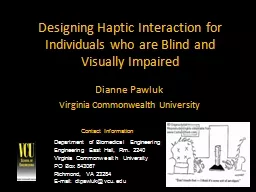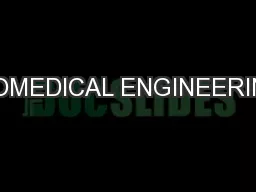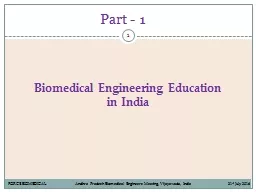PPT-Department of Biomedical Engineering
Author : risilvia | Published Date : 2020-06-16
Engineering East Hall Rm 2240 Virginia Commonwealth University PO Box 843067 Richmond VA 23284 Email dtpawlukvcuedu Contact Information Designing Haptic Interaction
Presentation Embed Code
Download Presentation
Download Presentation The PPT/PDF document "Department of Biomedical Engineering" is the property of its rightful owner. Permission is granted to download and print the materials on this website for personal, non-commercial use only, and to display it on your personal computer provided you do not modify the materials and that you retain all copyright notices contained in the materials. By downloading content from our website, you accept the terms of this agreement.
Department of Biomedical Engineering: Transcript
Download Rules Of Document
"Department of Biomedical Engineering"The content belongs to its owner. You may download and print it for personal use, without modification, and keep all copyright notices. By downloading, you agree to these terms.
Related Documents














